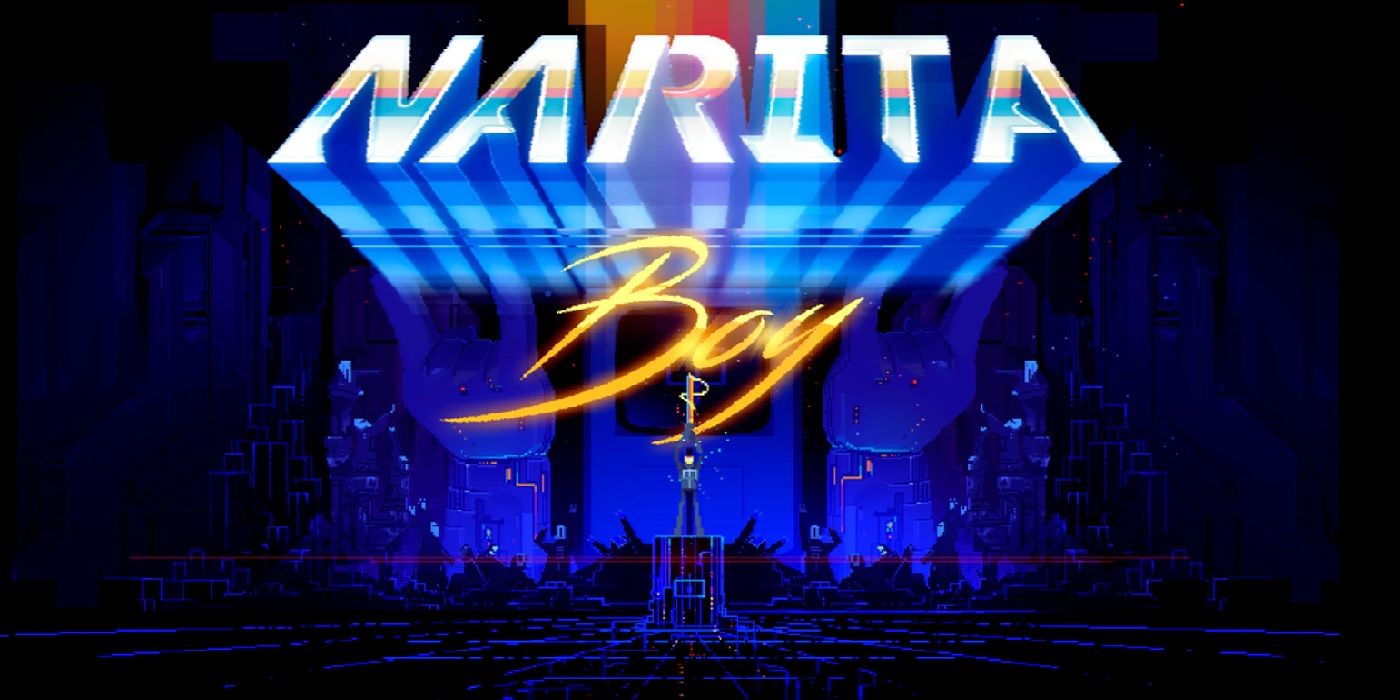
The 1980s-inspired indie adventure title, Narita Boy, launched for major platforms in late March 2021, and Game Rant had the chance to chat with Studio Koba about its first title. Creative director and CEO Eduardo Fornieles and composer Salvador ‘Salvinsky’ Fornieles spoke about the inspirations and ambitions behind the neo-retro title, and the important role that nostalgia, cultural references, and music play in Narita Boy.
From the game's cover, which pays homage to Tron, and the game-within-a-game frame narrative that pays tribute to Captain N, Studio Koba clearly reveres the pop culture touchstones of the 80s. In certain respects, Narita Boy could be considered a period piece, though it isn't a pure nostalgia trip. Both Eduardo and Salvinsky mention that the game provides a sort of alternate universe portrayal of the '80s, with a narrative that is completely situated in that era, but with modern flourishes and speculative twists. Eduardo led the discussion on development, narrative, and mechanics, but when it came to the game's music, he deferred to Salvinsky's expertise.
RELATED: Narita Boy: How Long to Beat
One term in particular stands out in regards to the musical aspects of Koba's maiden voyage: synthwave. The game's score was carefully crafted to evoke that specific genre of music. When asked to describe synthwave and what it means to him and the project, Salvinsky provided this nuanced definition:
"I would say that synthwave is music that, when you listen to it, takes you back to the ‘80s. Synthwave is modern electronic music made with sounds and tools that have an ‘80s signature, but a bit different. It is how we see the ‘80s today, how we think ‘80s music would have evolved, or how we would have liked the ‘80s to sound back in the day if we had had modern equipment. And thanks to modern computers, you can have at home all the sounds that were popular in the ‘80s!"
Synthwave has enjoyed a surge of popularity as of late, following the breakout successes of 80s influenced media such as Stranger Things, but Salvinsky's observation about the availability of modern musical tools is an astute one. Even a mid-range computer is capable of synthesizing audio that meets or surpasses the quality of game music from that era, and a skilled composer or sound designer can create musical tracks that evoke the era where synthesized pop was king. And, as older millennials hit their professional stride, more artists inspired by the 80s are emerging and sharing their music online.
Music is also a powerful and unorthodox vehicle for exploring speculative fiction. William Gibson's seminal cyberpunk work, Neuromancer, now reads as anachronistic, showcasing an intriguing but inaccurate vision of what the internet, virtual reality, and politics might have looked like if things played out differently. Eduardo mentioned that Neuromancer was one of many 80s influences on the game, and its score engages in a similar thought experiment: what if the synth-heavy sounds of the 80s persisted to modern day?
In terms of why synthwave music was specifically chosen for Narita Boy, Salvinsky continued:
"I don't know if Narita Boy's music is synthwave, or only synthwave - this is for critics to say. What I know is that we decided that the music had to sound pure ‘80s, but more like an OST from a John Carpenter movie than from a modern synthwave artist. Eduardo established a clear rule: synthesizers everywhere, epicness, and the use of the arpeggio. This is a chord played note by note to give this feeling of circularity with mystery (when exploring) or danger (when fighting)."
Repetition and escalation are key ingredients in establishing a mood, and arpeggio covers both bases, with the melody steadily evolving via note by note progression. This is especially true of tense and suspenseful situations, where danger is immediately present or possibly lurking behind a shadowy corner.
RELATED: Narita Boy Gets Stylish New Trailer at Xbox Indie Showcase
The cyberpunk-esque sounds of heavy synth also tie into Narita Boy's frame narrative, which features a unique game-within-a-game conceit. Synth music is gleefully inorganic, revering technology, electronics, and the enthusiasm for the technological breakthroughs of the 80s that laid the groundwork for our online world. That zeitgeist is an powerful one, evoking a similar sound to the score of Tron, which was indeed, epic.
Salvinsky went on to discuss the role of nostalgia in Narita Boy's sound. Inspired by classic TV intros (Knight Rider, Air Wolf, Street Hawk and others), Salvinsky's tracks evoke the same excitement as those pulpy, televised, techno-adventures. Even though coasting on nostalgia is often derided as a crutch, it can be also be an incredibly powerful tool for tapping into specific emotional connections. The sounds force players to engage with the medium through the lens of the era the nostalgia evokes.
All of that said, Narita Boy's influences don't begin and end with the '80s. As Salvinsky said, modernization of '80s sounds is a key part of synthwave, and he was influenced by modern electronic artists such as Deadmau5 and Daft Punk.
Narita Boy is available now for Linux, Mac, PC, PlayStation 4, Switch, and Xbox
MORE: Sony Pictures Animation Is Developing A Musical About Demon-Hunting K-Pop Stars

